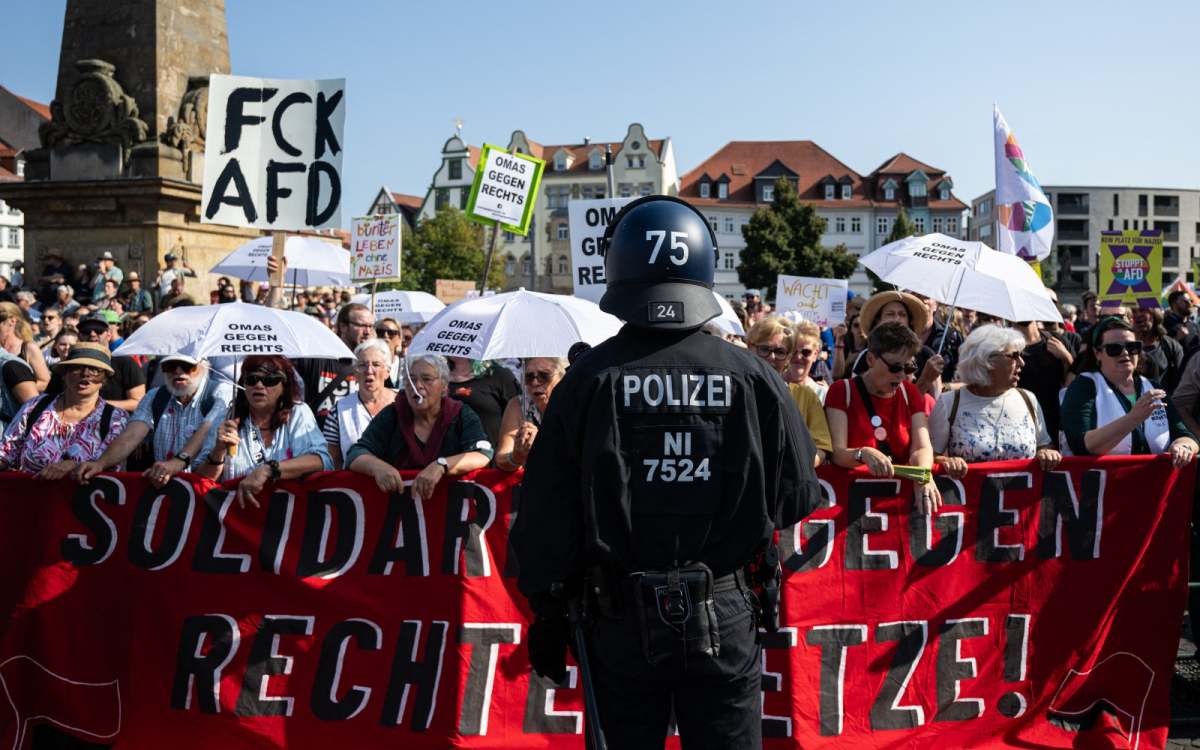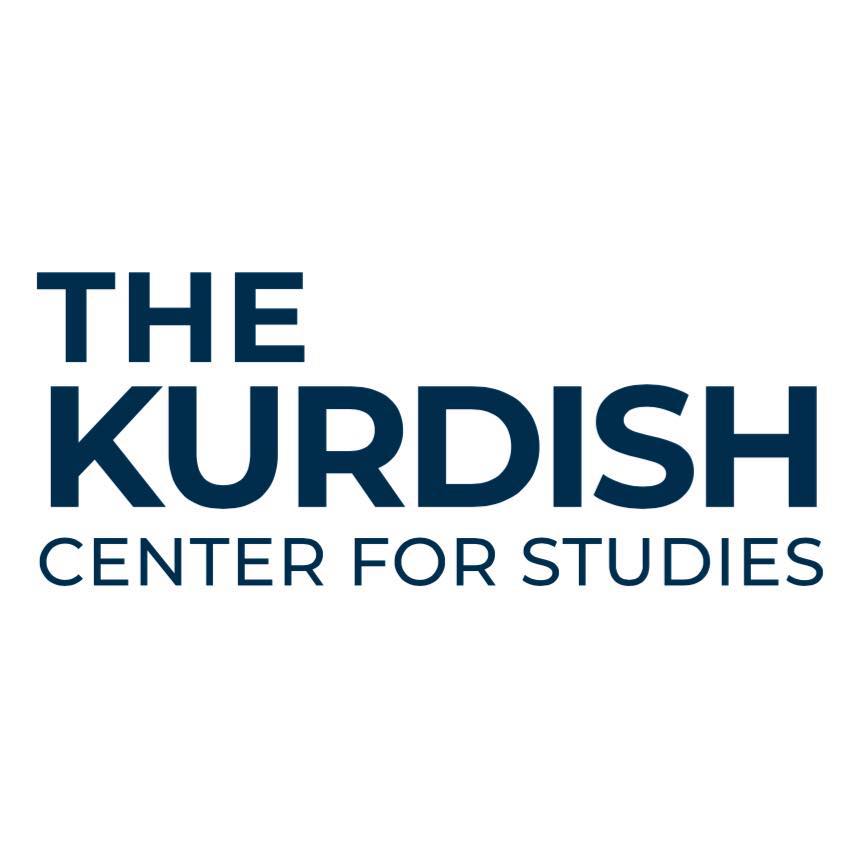The Rise of AfD: Shifting Democratic Norms in Eastern Germany
By The Kurdish Centre for Studies
Eastern Germany, formerly known as the German Democratic Republic (GDR) before German reunification in 1990, comprises five states. In the post-unification political lexicon of Germany, these states are referred to as the “new states”: Brandenburg (2.5 million inhabitants), Mecklenburg-Vorpommern (1.6 million inhabitants), Saxony (4 million inhabitants), Saxony-Anhalt (2.2 million inhabitants), and Thuringia (2.1 million inhabitants).
By analyzing the distribution of seats in the councils of these states and studying the position of political parties as well as the mood of voters, we observe a significant presence of the Alternative for Germany (AfD), a populist party founded in 2013 that opposes nearly all economic, immigration, and education policies implemented by the traditional parties in Germany. In recent years, the AfD has gained prominence and has become a significant player in the political landscape of Germany, as well as the most popular party in eastern Germany.
Elections in the Eastern German States
Although the local elections in the eastern German states are not yet complete, as the elections for the Brandenburg state parliament are scheduled for September 22, the political landscape in eastern Germany is becoming increasingly clear, especially with the noticeable advancements made by the AfD in the four states.
In the elections held on June 9 in Mecklenburg-Vorpommern and Saxony-Anhalt, the AfD achieved notable results and emerged as the most prominent force in these two eastern states.
In Mecklenburg-Vorpommern, the results were as follows: Alternative for Germany (AfD): 25.6%, Christian Democratic Union (CDU): 20%, Democratic Party (SPD): 12.7%, Left Party: 8.8%, Greens: 6.7%, Sara Wagenknecht’s Coalition: 6.1%.
In Saxony-Anhalt: AfD: 28.1%, CDU: 26.8%, SPD: 11.9%, Left Party: 8.3%, Greens: 4.5% (The Sara Wagenknecht coalition did not participate in this election)
In the elections held on September 1 in Saxony and Thuringia, the results were as follows:
Saxony: AfD: 30.6%, CDU: 31.9%, Sara Wagenknecht’s Coalition: 11.8%, SPD: 7.3%, Greens: 5.1%, Left Party: 4.5%.
Thuringia: AfD: 32.8%, CDU: 23.6%, Sara Wagenknecht’s Coalition: 15.8%, Left Party: 13.1%, SPD: 6.1%, Greens: 3.2%.
According to opinion polls related to the Brandenburg state elections on September 22, the projected outcomes are as follows: AfD: 28.6%, SPD: 24.5%, CDU: 15.4%, Sara Wagenknecht’s Coalition: 13.8%, Greens: 5%.
Regarding the German parliamentary elections, scheduled for September 28, 2025, opinion polls indicate that the most popular parties and their expected vote percentages are as follows: CDU 32.5%, AfD 17.6%, SPD 14.4%, Greens 11.3%, Sara Wagenknecht’s Coalition: 8.1%.

The AfD is Turning Eastern Germany Blue
With the AfD’s clear lead, the eastern states are now characterized by the color blue, which symbolizes their party. Research institutions focused on elections and voter trends are starting to analyze the reasons behind the public support for this party while distancing themselves from traditional parties, notably the Christian Democratic Union (CDU), the party of former Chancellor Angela Merkel and current opposition leader Friedrich Merz. Merz had promised to penetrate the AfD’s support base and reduce it by half if elected as Merkel’s successor in the CDU. However, Merz’s strategy has not succeeded in diminishing the AfD’s influence.
The traditional parties, having experienced significant losses and declines, are now discussing the potential for unity to confront the AfD and establish what they call a “firewall” (Brandmauer) around the party by refusing to form alliances with it to establish local governments in the eastern states where it has achieved success. Despite their ideological differences and varying visions, these parties are united in their efforts to isolate and contain the AfD, ensuring it remains out of governance and responsibility.
Consequently, the CDU sees no issue in allying with the Social Democrats, Greens, and the Left to form a coalition government that excludes the AfD from power. However, this approach is a ‘double-edged sword,’ as it risks alienating the CDU’s conservative voters who oppose any collaboration with the Greens and the Left and prefer to give the AfD a chance to govern and take responsibility for addressing problems.
In response, the AfD is intensifying its media campaign, leveraging social media to expose the policies of traditional parties. It claims that these parties do not prioritize the interests of voters or respect their decisions to support the AfD, but rather seek to maintain their power—even if it involves forming alliances with parties that oppose them fundamentally. The AfD argues that traditional parties have lost their identity and are no longer committed to their original programs and visions, becoming complacent and focused solely on remaining in power.
The AfD also contends that the CDU has shifted from a conservative platform to a left-leaning one, preferring alliances with the Greens, the Left, and the Sara Wagenknecht coalition over cooperating with the conservative AfD. This decision is seen as a betrayal of conservative voters who would rather give the AfD a chance to govern and address the challenges facing society from a decision-making position. The AfD criticizes traditional parties for valuing power over core principles, asserting their willingness to ally with parties that fundamentally disagree with their ideologies.
Additionally, the AfD highlights various statements made by its officials that downplay or deny the atrocities committed by the Nazi regime, leading the Department for the Protection of the Constitution (domestic intelligence) to officially monitor the AfD as a “suspicious” entity.

The Christian Democratic Union (CDU)
The rise of the right-wing AfD represents a significant shift in the German political landscape, particularly in former ‘Eastern Germany’, marking the first major change since the end of World War II. Historically, Eastern German voters have tended to lean left and lacked enthusiasm for nationalist ideologies. However, the recent changes in their sentiment highlight the substantial transformations that have taken place in Germany since reunification in the early 1990s, including economic and social changes where a form of “hegemony” and a ‘West German’ perspective imposed on the eastern part of the country.
Since reunification, approximately 1.5 million residents from the eastern states have emigrated. Despite investing hundreds of billions of euros in economic infrastructure, housing, social projects, and job creation, these efforts have failed to satisfy East Germans or encourage them to remain and adopt a more moderate political stance.
While discontent has characterized the post-reunification period until the early 2000s, the rigidity and rejection of “Western hegemony” have intensified significantly since 2015—a pivotal year when former Chancellor Angela Merkel allowed nearly a million migrants to enter Germany without parliamentary approval, in clear violation of the Schengen and Dublin treaties.
The AfD has successfully captured the traditional voter base of the CDU by highlighting the party’s responsibility during Merkel’s tenure for current challenges, particularly the rising number of migrants. It has capitalized on alarming news reports and statistics about rising crime rates against German citizens, the spread of Islamic fundamentalism, and increased numbers of Islamist extremists.
The AfD’s media machine has drawn public attention to significant economic underperformance, declining living standards, severe housing shortages, and the difficulties faced by retirees due to low pensions. The party alleges that the government continues to house migrants in hotels and new buildings, even claiming to covertly construct apartments for them, away from media scrutiny. The AfD argues that a government-controlled media narrative keeps these properties from being available to German citizens.
The AfD leverages public frustration with the coalition government’s policies on migrants and asylum seekers, pointing out that the combined popularity of the three governing parties is currently at only 27%. The AfD focuses on the increasing number of asylum seekers arriving in Germany each year, asserting that the government is both unwilling and unable to repatriate around 300,000 asylum seekers whose applications have been rejected and who are currently on deportation lists.
The AfD has effectively established a narrative of grievance among its voters, portraying the coalition of traditional mainstream parties as a “consolidation of dictatorship” and framing themselves as victims of a conspiracy aimed at implementing plans for the “Islamization of Germany” and replacing its white Christian population.
This rhetoric has proved particularly effective in the eastern German states, attracting a young demographic (ages 19 to 29), of whom 35% support the AfD. Issues relating to migration, Islamic extremism, and recent attacks in Mannheim and Zöllingen by extremists, alongside nearly daily instances of sexual assault and stabbings, are often highlighted. Additionally, the traditional parties’ unwavering support for Ukraine in its conflict with Russia is cited as a reason for the AfD’s increased popularity, as they position themselves as a “peace party” opposed to sending more weapons at the behest of NATO countries.
It is evident that the coalition of traditional parties against the AfD is unlikely to weaken it; on the contrary, the AfD continues to adopt the role of the ‘victim’. Efforts by the coalition government to deport rejected asylum applicants (including the recent deportation of 28 Afghans) and to replace cash aid with in-kind support in an attempt to create an unwelcoming environment for asylum seekers have not succeeded in restoring voter confidence or discouraging them from supporting the AfD.
What remains is the legal effort to prevent the AfD from gaining prominence through media pressure, pursuing lawsuits against it, and refusing to ally with it for local governments. This represents a last-ditch effort to engender apathy among the AfD’s voters, signaling to them that the party they support in reaction to traditional policies will never have the opportunity to participate in governance and implement its agenda.




Comments are closed.